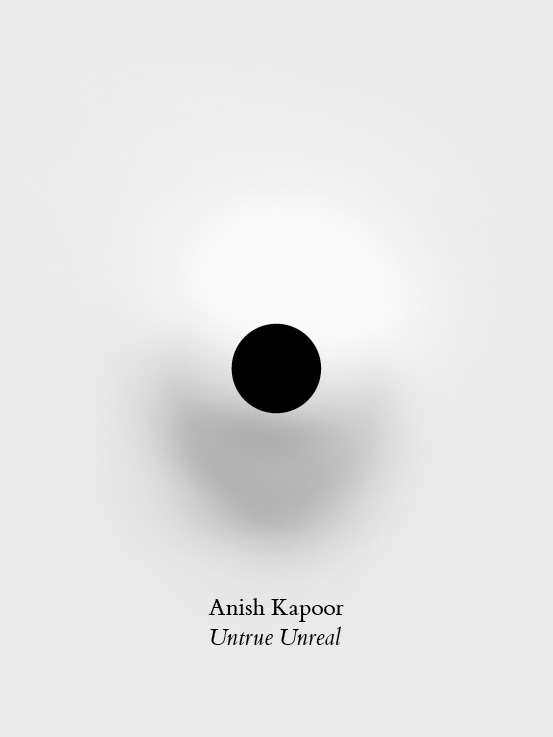After Naples, Rome, Milan and Venice, Anish Kapoor arrives in Florence. Already accustomed to realising projects in contexts rich in history, for the first time the artist confronts an early Renaissance building such as Palazzo Strozzi, a true symbol of humanistic culture. “Palazzo Strozzi is symmetrical. The enfilade of rooms is structured and rigorous. Making an exhibition in these rooms is not easy” declares Kapoor in conversation with Arturo Galansino, in the interview conducted for the catalogue “too much order kills the way in which the work can interact with the viewer. It has therefore been necessary to interrupt the order of the rooms by placing works in such a way as to make alternative routes through the building.”
Anish Kapoor's challenge, masterfully implemented, is to destabilise the rigorous and symmetrical vision underlying the extraordinary Renaissance project. The unreal is mixed with the untrue, transforming or negating the ordinary perception of reality. Thus we are invited to explore a world in which the boundary between true and false is dissolved, opening the doors to the dimension of the impossible.
A physical and mental experience that leads us into a world of shadows, into the unconscious, into the well (of which Morgan Ng speaks in his essay in the catalogue), “the physical vertigo of the unknown, the fear of falling, of being sucked into the inscrutability of the past and the future.”
In the volume, along with Morgan Ng, scholars from several countries specializing in this historical period have set out to analyze the artist’s creative process: Diane Bodart, Francesca Borgo, Rachel Boyd, Dario Donetti and Tommaso Mozzati.
Donetti stresses how the architectural skin over the so well-defined volumes that make up the building renders particularly evocative the dialogue with the artist’s ability to test the limits of a closed structure, with reflections on relationships of scale and on the concepts of external membrane and facing. Wax, one of the materials characteristic of Kapoor’s works, goes back a long way in Florentine history. And in his essay in the catalogue Borgo looks back over its use, both as a material employed for various technical purposes and as an artistic medium in its own right, with reference to the ancient tradition of ex-votos representing parts of the body or life-size figures, like the ones made by the ceraiuolo called Orsino for Lorenzo de’ Medici to celebrate his survival of the Pazzi conspiracy. In one of them Lorenzo the Magnificent appeared with a bandage on his wounded throat, just as he had presented himself at the window of his house to prove to the citizenry he was alive; an image that, like wax, evoked the vulnerability and ephemerality of the flesh and the uncertainty of human life and that can also be likened to Kapoor’s works in silicone, which call to mind the bowels, or violated and bleeding bodies. And then color, which in Kapoor’s poetics is not just substance and shade, but also an immersive phenomenon, with an at once spatial and illusory volume of its own. This creates—as Rachel Boyd points out in her essay—a parallel with the use of pigments in the sculpture not only of the Renaissance, but also of antiquity: a relatively new discovery in the field of art history. Diane Bodart, on the other hand, focuses in particular on Kapoor’s sculptures with a reflective surface and their connection with perspective and the relationship between painting and sculpture: “Positioning his practice at the intersection of sculpture and painting, and merging the physical dimension of the first with the illusory quality of the second, Kapoor revives the terms of the old comparative debate between the two arts, commonly known as the paragone, that heated the discourse of arts during the Italian Renaissance.”
Yet Kapoor’s works transcend their material nature: pigments, stone, shiny steel, wax and silicone are manipulated, sculpted, polished, saturated and treated, bringing into question the boundary between plasticity and immateriality. And, as Kapoor explained to Maurizio Cattelan, who had asked him where his work started from and how it took shape: “Alchemy, work and materials” because in the work the material “has been subjected to an alchemical transformation. The mix of mind and matter is that marvel which we humans can make and have forgotten that we can make.”
For the first time, the catalogue, published by Marsilio Arte, presents Kapoor's work in a rigorous and extremely elegant black and white repertoire alternating with colour shots of the installations in the exhibition. A story that unravels from the early works of the 1980s to the site-specific work created for the courtyard of Palazzo Strozzi.
